Though temperatures in Rome don’t suggest it, we are now halfway through October and over the last week or so we have been living days that didn’t exist in most of Catholic Europe four hundred and forty-one years ago.
In February, 1582 Pope Gregory XIII of the Boncompagni family (whose crest is an excellent gold dragon on a red background) issued a papal bull entitled inter gravissimas which introduced reforms to the calendar to be implemented later that year. The calendar used in Europe had been last reformed during the dictatorship of Julius Caesar (with a few tweaks under the emperor Augustus) and it turned out that fifteen centuries of minor discrepancies added up to some fairly major discrepancies.
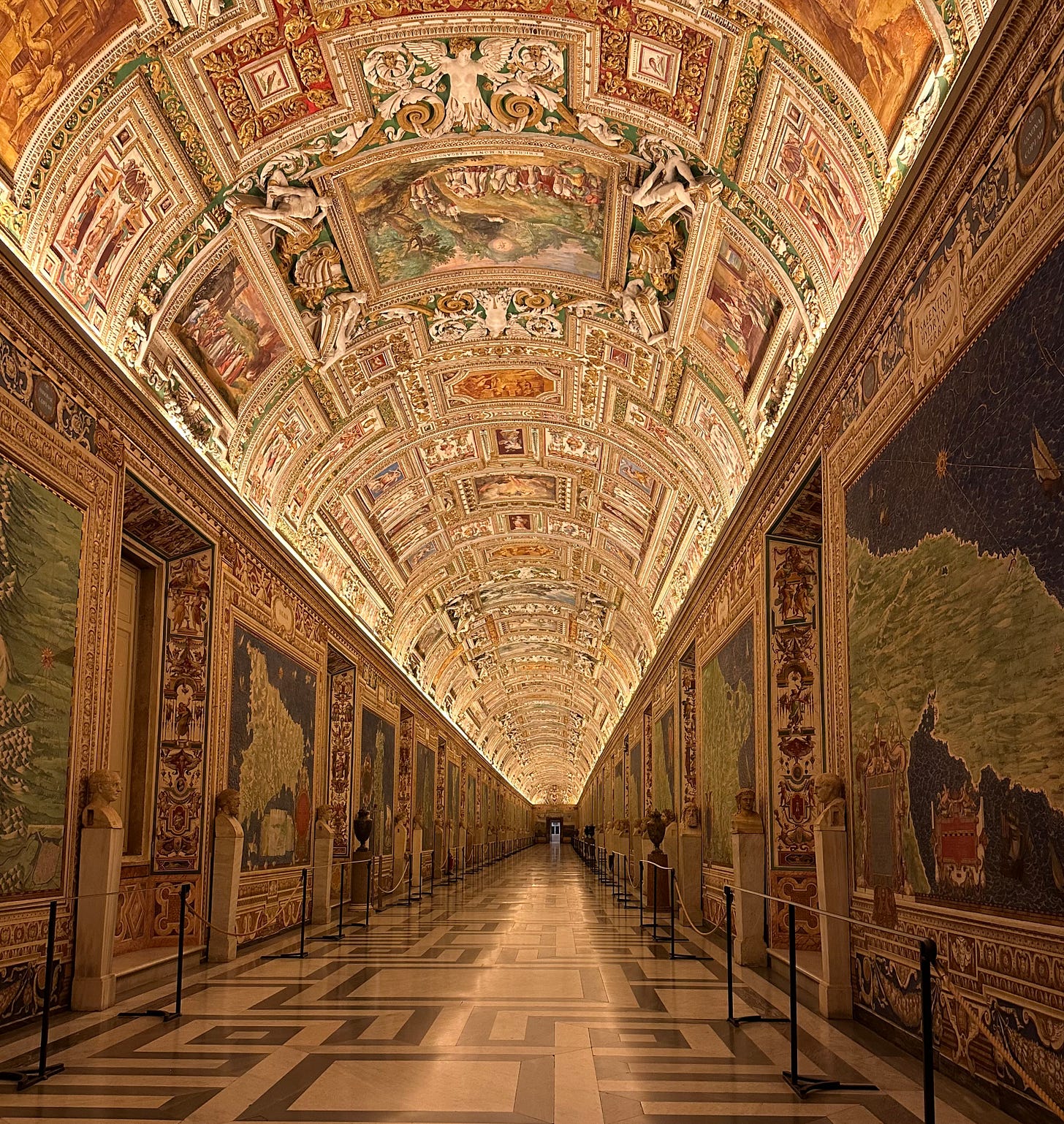
Under Julius Caesar leap years had been introduced, but it transpired that there were not exactly three hundred and sixty-five and a quarter days in a year. Ten minutes here and ten minutes there had added up and the observed solstices and equinoxes were visibly out of kilter with the calendar. Pope Gregory’s concern lay particularly in the effect inaccuracies had on the establishment of the date of Easter, for which the date of the vernal equinox is fundamental.
Pope Gregory’s astronomers did their sums across Europe, but nevertheless I like to imagine Lilius, Clavius and co scribbling away in the tower above the Gallery of the Maps which was contemporaneously being decorated in the Vatican Palaces. Eventually a solution was reached. Yes, said the astronomers and mathematicians, every four years should be a leap year, unless the year were divisible by one hundred in which case it shouldn’t. However, they continued, if the year were divisible by four hundred it should also be a leap year. Thus there was no twenty-ninth of February in nineteen hundred but there was in the year two thousand. In order to put this new system in action the calendar needed to be recalibrated, and so it was that the fourth of October of fifteen eighty-two segued straight to the fifteenth. These days, the papal bull emphasised, were not to be considered for purposes of loan repayments, taxation and the like.
The Gregorian calendar was, of course, only accepted by Catholic states. Pope Gregory was one of the nemeses of Elizabeth I encouraging Philip II of Spain’s plots to remove her from her throne, though in an attempt to relieve pressure on English Catholics he did lift the 1570 bull of excommunication which declared her “the pretended Queen of England and the servant of crime”.
Elizabeth was, we can safely say, less than disposed to accept the reforms of Pope Gregory’s calendar.
The year after the new calendar was put in place, below the astronomers’ tower, the gallery of maps was completed. One hundred and twenty metres long, it vaunts papal power with uncannily accurate maps detailing territories of the Italian peninsula and its surrounding islands. As they reached the end of the hall distinguished visitors were presented with the Battle of Lepanto in which, just a decade earlier, Catholic Europe had set aside her differences to join forces against the common, and Muslim, enemy of the Ottoman Empire. Visitors to the papal palaces were presented with Pope Gregory’s triumphant reign over not just land, but also over time. Now that is what I believe the cool kids call “a flex”.
Saluti from incipiently autumnal Rome,
Agnes



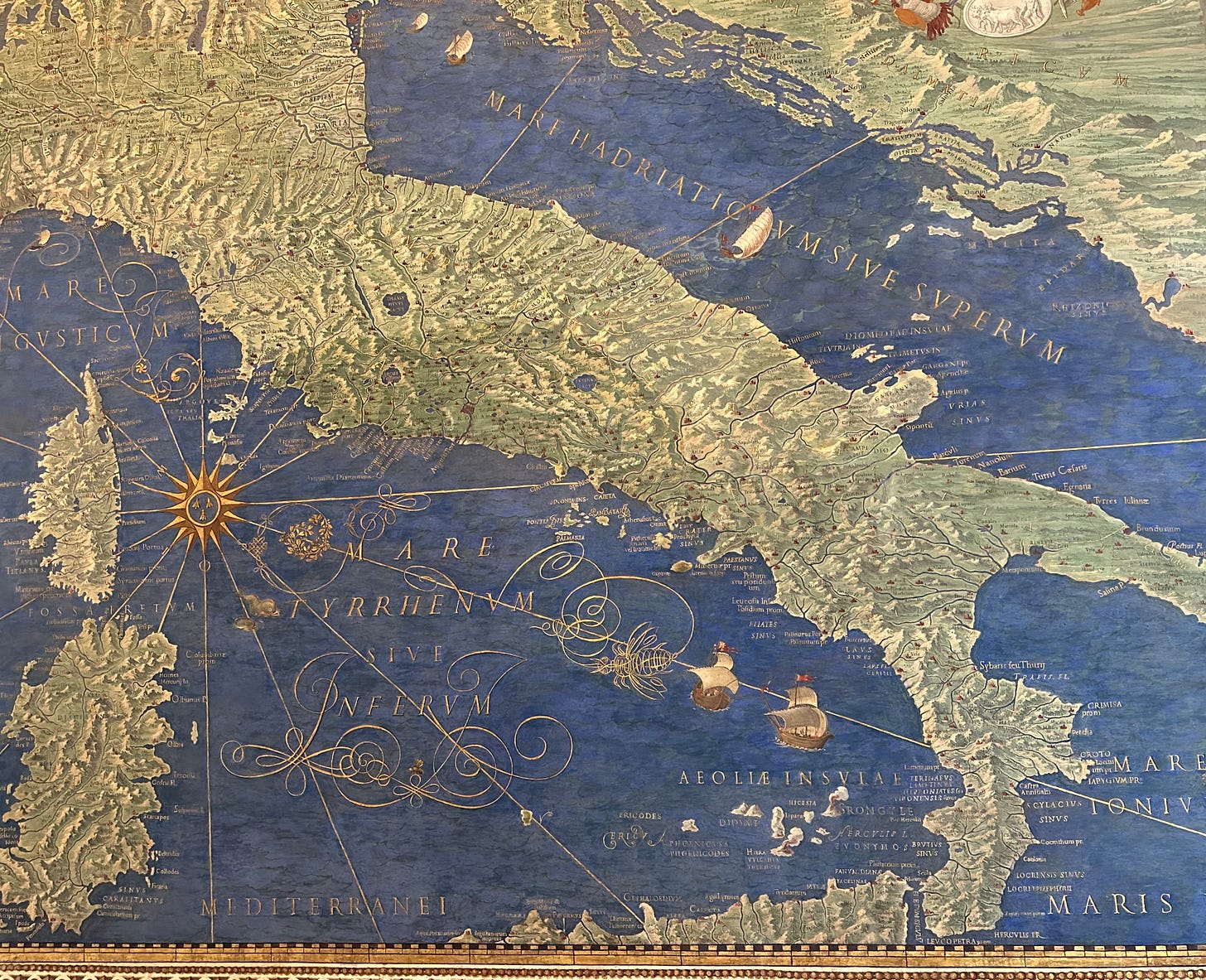
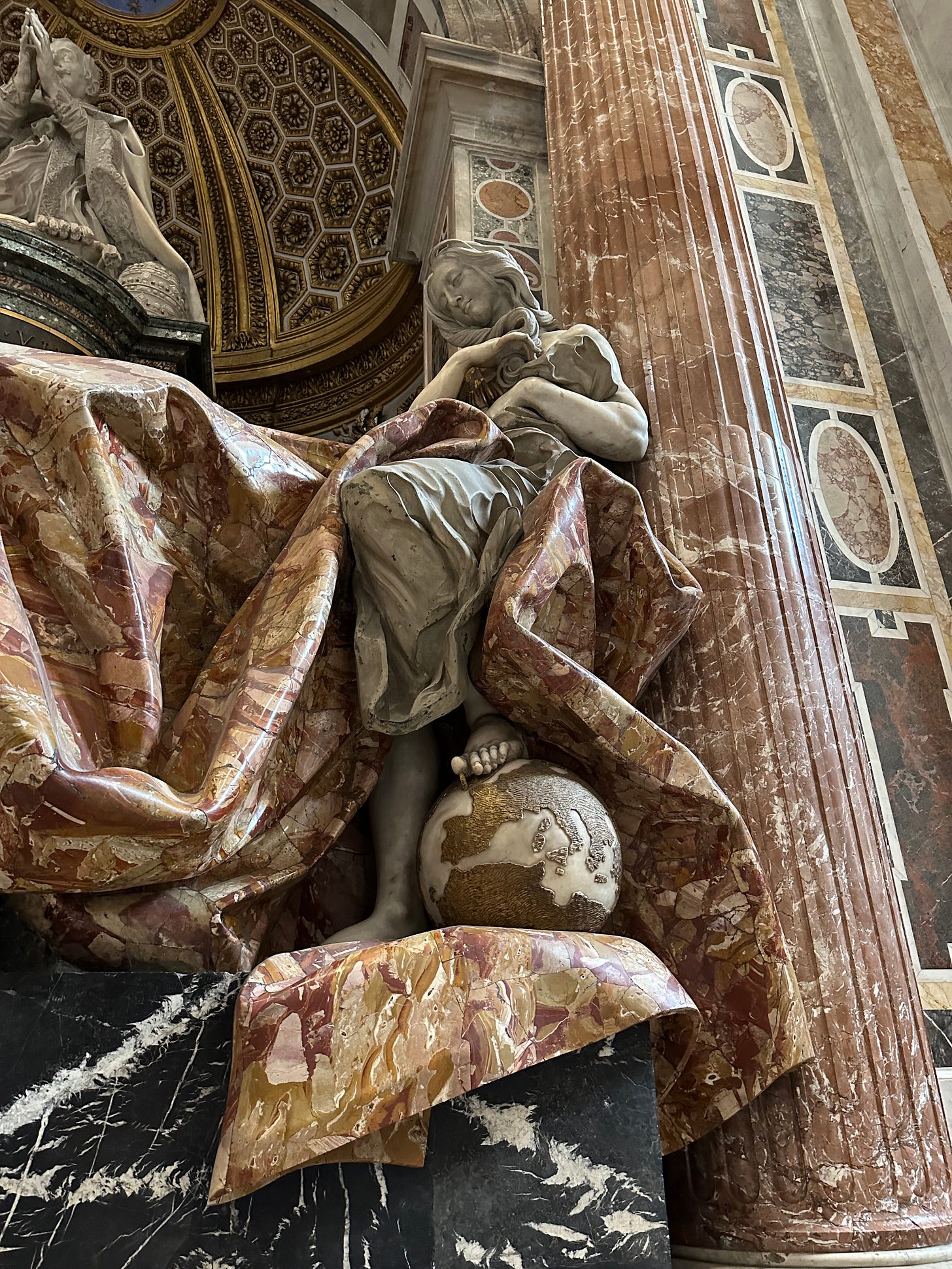
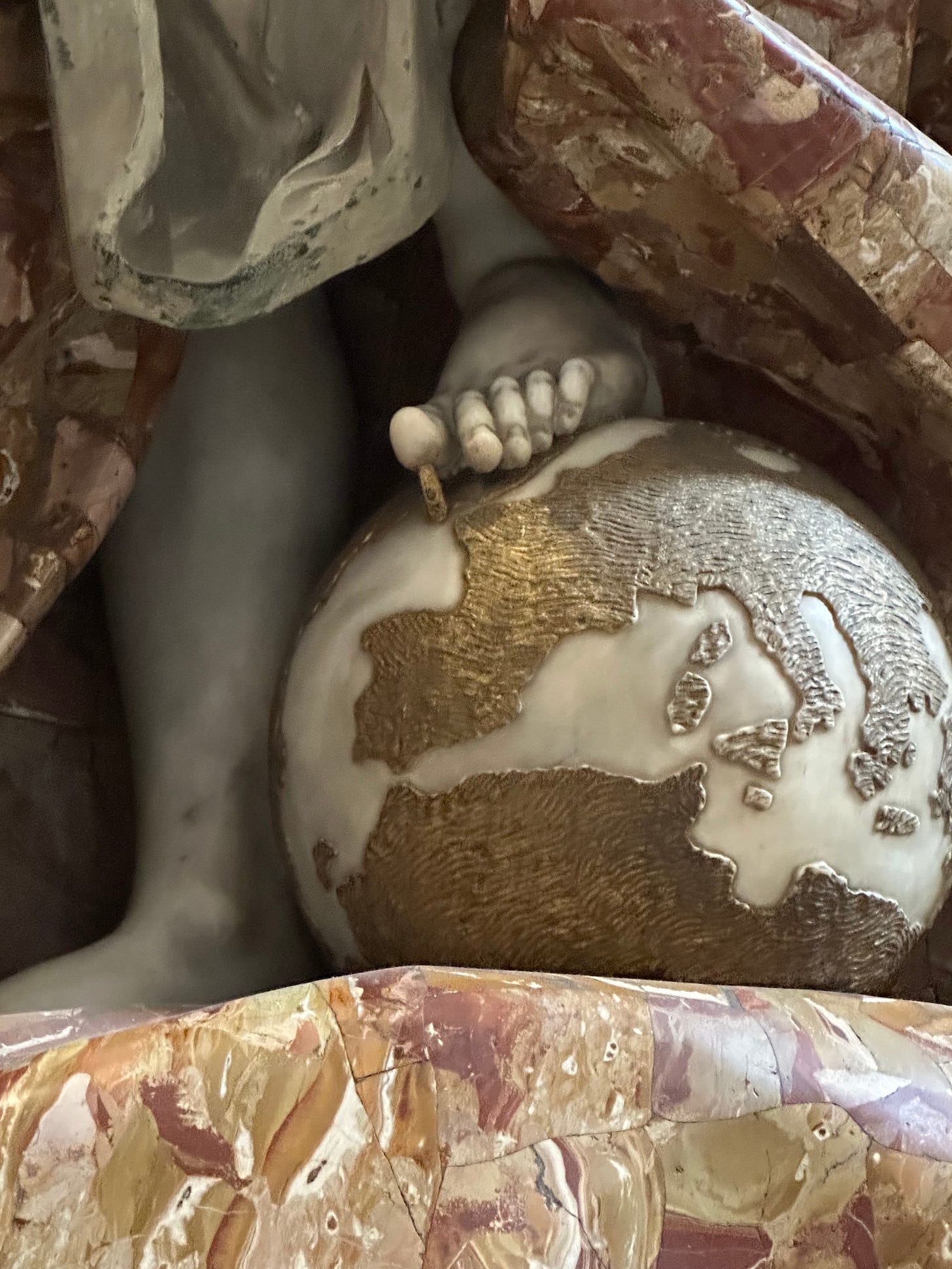
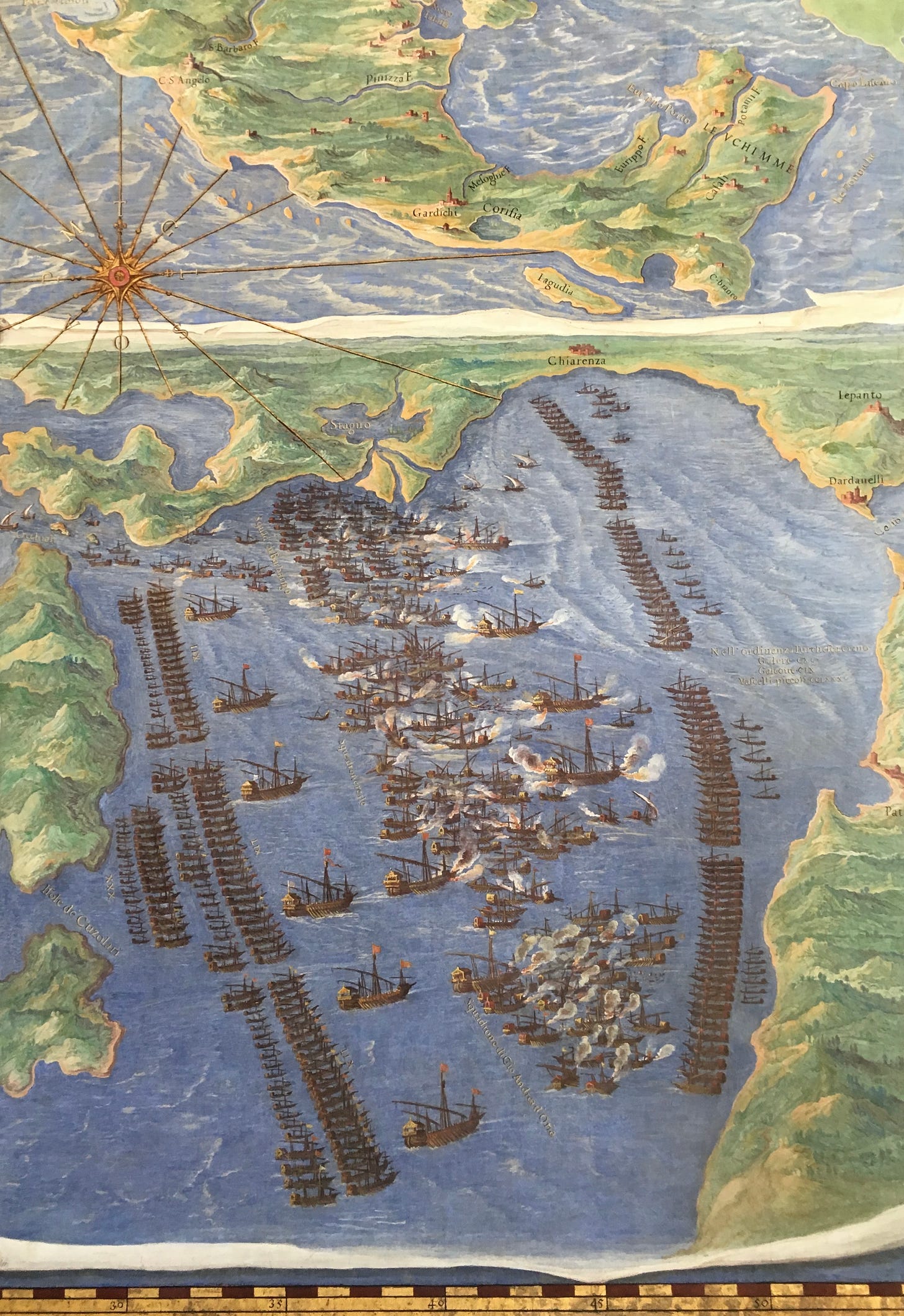
Kind of makes any discussions of daylight savings time seem marginal.
I love the image of Alexander's tomb in St Peter's. I have visited so many times and never spotted this detail. Makes me wonder what other 'prickly' details I have missed! I very much enjoyed your post. Thank you!